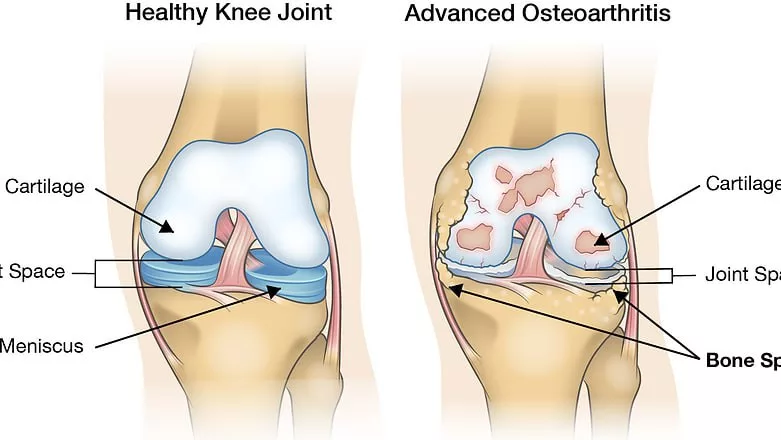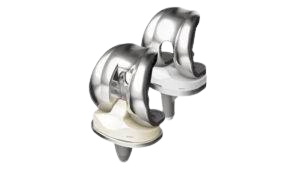Knee Replacement Pathway
Knee Pain

Osteoarthritis
Symptoms
- Gradual onset of pain and stiffness
- Pain worsens with movement
- Limited range of motion
- Swelling and tenderness
Knee Replacement

Knee Replacement:
- This operation resurfaces the knee joint by removing damaged bone and cartilage in the knee joint (arthritis).
- These surfaces are replaced with metal and plastic implants, allowing knee motion and function, relieving pain, and correcting any deformity.
- Knee replacement surgery (arthroplasty) has a high rate of success in relieving pain and restoring mobility.
- Today 95 out of every 100 knee replacements are successful and even at 10 to 15 years after the operation, will still be giving good service. Some knee replacements have lasted 25+ years.
Is Total Knee Replacement right for you?
It is indicated for severe chronic pain in the knee that limits everyday activities such as walking, going up and down stairs, getting out of a chair, as well as pain at rest, especially at night.
The Anaesthetic:
- Knee replacement can be done under a general, or a spinal anaesthetic that numbs the lower body and legs.
- Ask the anaesthetist for sedation if you do not wish to stay awake during the procedure.
The Operation:
- Most patients are admitted the day of surgery.
- Your surgeon will make an incision down the front of your knee.
- The blood vessels, muscles and nerves will be protected during surgery and special tools will be used to reshape the surface of the bone.
- In most cases bone cement is used to fix the new joint in place
The Implants:
We use one of the most clinical successful implants with one of the best long term results
Rehabilitation:
- An exercise programme is an important part of recovery. This starts with gentle exercises in your hospital bed.
- Patients are normally encouraged to get out of bed with the help of physiotherapy as soon as possible, usually on the day of surgery.
- Further physiotherapy and exercises at home may be prescribed. In the early stages you will need crutches or a walking frame.
- During the first few weeks stretching and strengthening the muscles remain goals of treatment. As strength and motion improves, you may be encouraged on other activities such as distance walking, cycling, and swimming.
- Your external stitches or clips are usually removed at the follow up clinic 14 days.
- You may need to take 6-12 weeks off work depending on your job.
